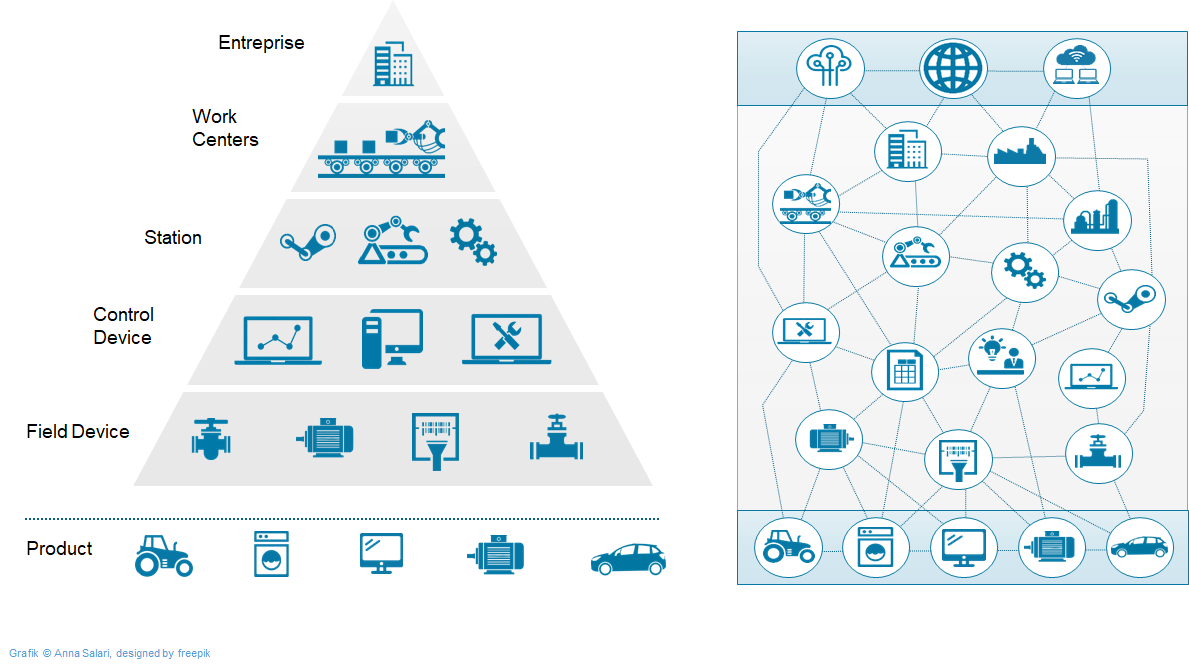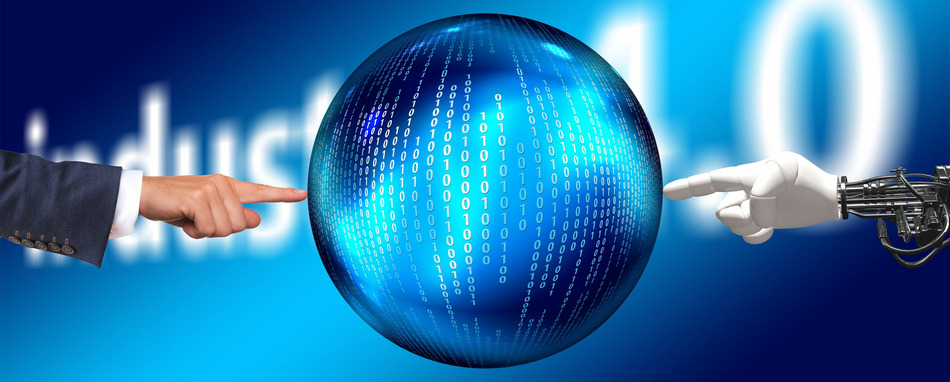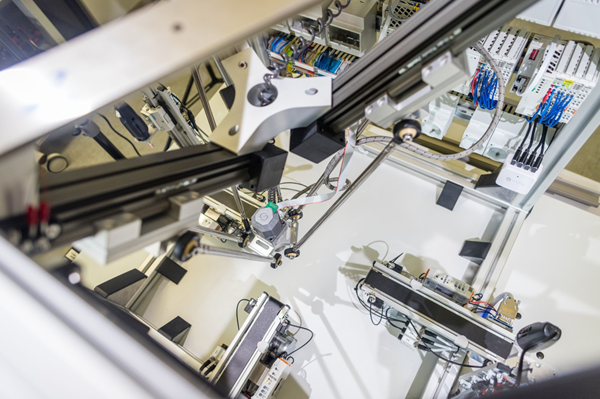Industry 4.0
The almost unlimited access of information in the internet, new forms of communication or also the support by the accomplishment of daily tasks by several apps embossing our everyday life today,
Since the 1970s years technologies of information and communication technique are applied into the industrial environment. A new stage in the use of such technologies is being discussed today in science, business and politics under the keyword 'Industry 4.0'. Starting with the use of the steam engine ('1.0'), through the introduction of electricity ('2.0') and the use of electronics and IT ('3.0'), the transformation of industry now leads to the fourth industrial revolution - characterized by intelligent, self-organizing plants and machines.
Integration of objects into the world of information
The better consideration of individual costumer demands, an efficient and ressource saving production as well as the relief of employees from monotonous and stressful work are only several potential advantages of the Industry 4.0. The convergence of the physical and the virtual world is characteristic. Essential to succeed this intention is the availability of information for example regarding abilities, properties or interoperability of real components inside a network of intelligent participants across the whole life cycle.
Such information as well as possibilites for the provision of services for other service systems participants will be made available by a digital repesentation of real assets. An asset administration shell is such a digital representation.
From the automation pyramid to a distributed, decentrally organised network
The main innovation compared to the previous automation technology is the networking via open and global information networks (Internet). It is no longer completely clear in advance which subsystems will interact with each other in which way. This requires higher intelligence and adaptability of individual components. In the classic automation pyramid, data, services and functionalities are relatively rigidly hierarchical. The vision of Industry 4.0 requires a high degree of flexibility with regard to the cooperation possibilities across all participating asset classes. Therefore, a gradual dissolution of the classical automation pyramid towards a distributed, decentrally organized network of service system participants can be expected (figure).
© Plattform Industrie 4.0; Anna Salari, designed by freepik
Further information regarding Industry 4.0 is available here or directly from us!












